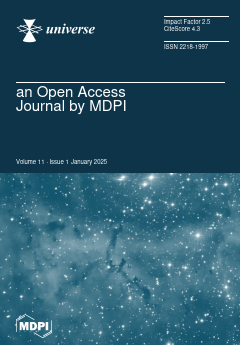The concept of a rapidly sign-switching cosmological constant, interpreted as a mirror AdS-dS transition in the late universe and known as the
CDM, has significantly improved the fit to observational data, offering a promising framework for alleviating major cosmological tensions such
[...] Read more.
The concept of a rapidly sign-switching cosmological constant, interpreted as a mirror AdS-dS transition in the late universe and known as the
CDM, has significantly improved the fit to observational data, offering a promising framework for alleviating major cosmological tensions such as the
and
tensions. However, when considered within general relativity, this scenario does not predict any effects on the evolution of the matter density contrast beyond modifications to the background functions. In this work, we propose a new gravitational model in which the background dynamics predicted by the
CDM framework are mapped into
gravity, dubbed
CDM, rendering the models indistinguishable at the background level. However, in this new scenario, the sign-switching cosmological constant dynamics modify the evolution of linear matter perturbations through an effective gravitational constant,
. We investigate the evolution of the growth rate and derive new observational constraints for this scenario using RSD measurements. We also present new constraints in the standard
CDM case, incorporating the latest Type Ia supernovae data samples available in the literature, along with BAO data from DESI. Our findings indicate that the new corrections expected at the linear perturbative level, as revealed through RSD samples, can provide significant evidence in favor of this new scenario. Additionally, this model may be an excellent candidate for resolving the current
tension.
Full article





